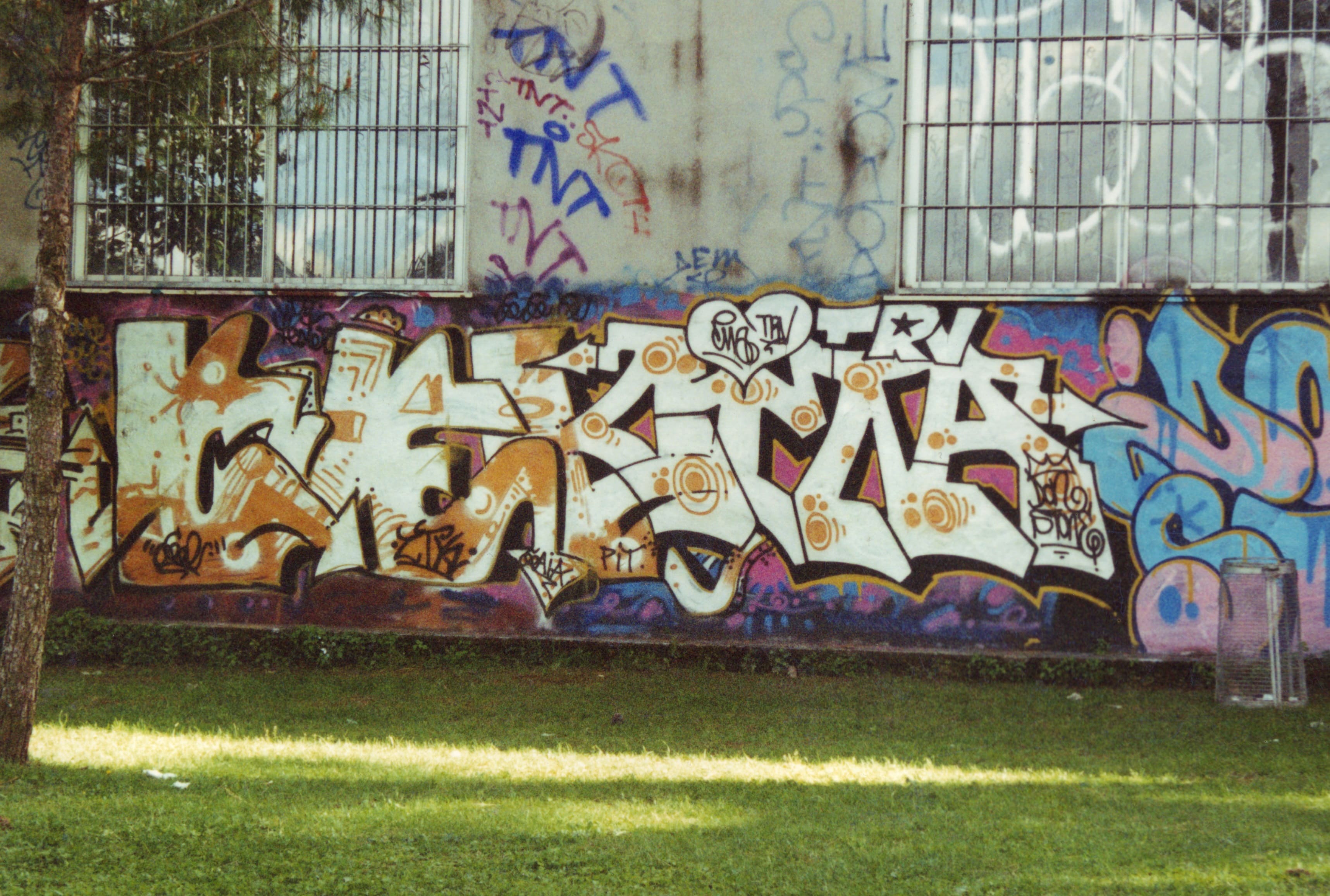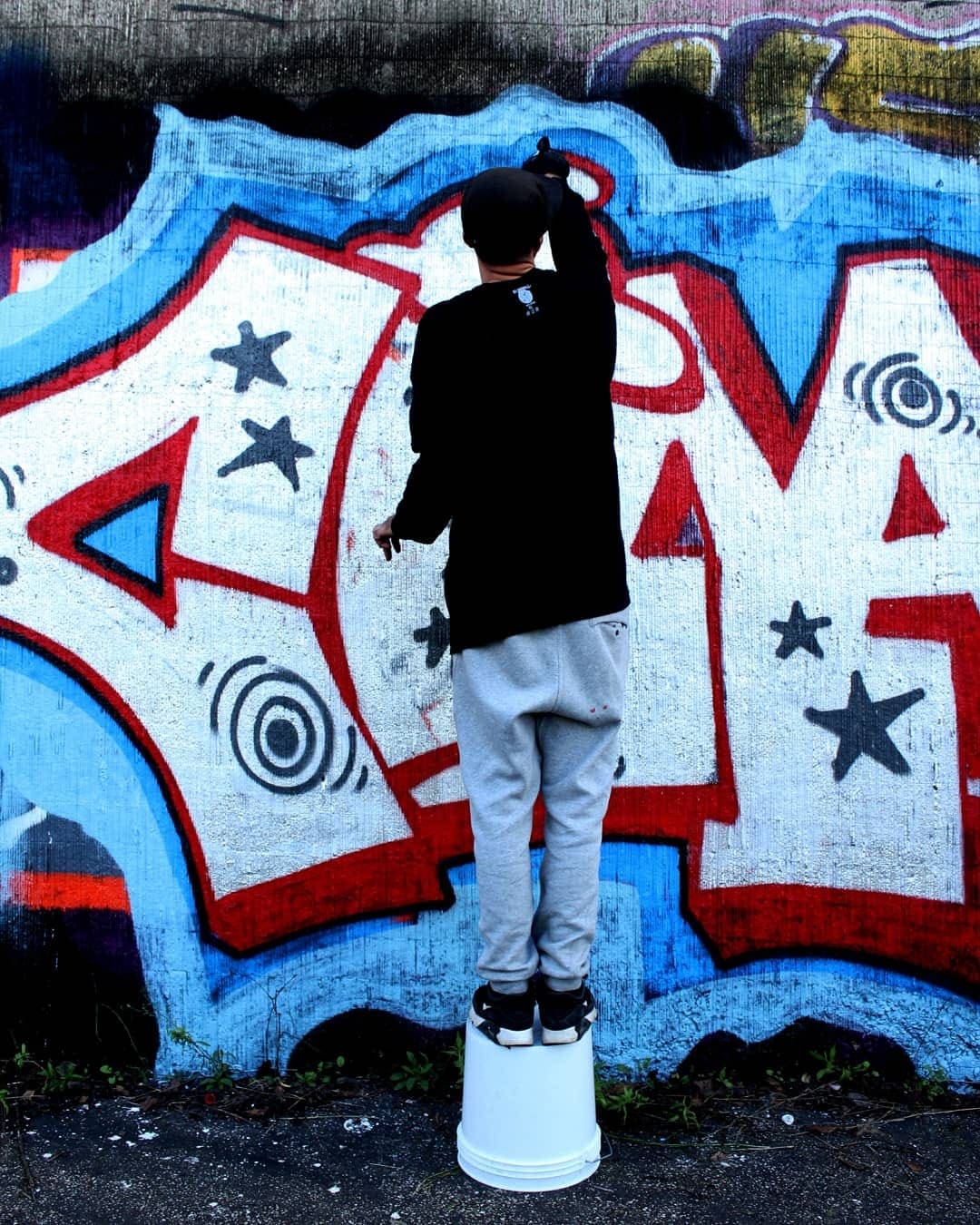Amir Issaa aka Cina Trv - Digging In Graffiti
Amir Issaa aka Cina Trv, a historic Roman writer, in this interview told us his story and his view on the world of graffiti and Hip Hop. It was an honor for us to be able to do this interview, in which the essence of the Roman scene emerges, right from the beginnings of the movement.
Let’s start with the passion for graffiti, how did it come about and what made you start?
When I was a kid in the 1990s, I started getting into graffiti, because it was the most tangible and visible thing, you would find them in the street whether or not you were part of the Hip Hop or graffiti world. The first things I saw were the tags, I was curious about them, I remember seeing them when I was leaving school on my way home. The first one I saw was almost certainly Ioice (which later became Napal). Rome has always been full of writing regardless of the writing, in the street you would often find political or football-related writing, writers’ tags however were the ones that caught my attention not only because of the style but, also because you would find the same signature in different places and contexts. When I was twelve years old, I started to replicate in my notebook what I saw in the street inspired by Ioice, Clown, Crash Kid, and EMC (later it became Stand).
Then one day I saw on TV Beat Street (a 1984 cult film), in which there were writing scenes where they painted trains. The next day I went buying some cans from the hardware store, I think it was the 91', got sprays, and immediately went writing on Torpignattara’s market outer walls, in the neighborhood where I grew up.
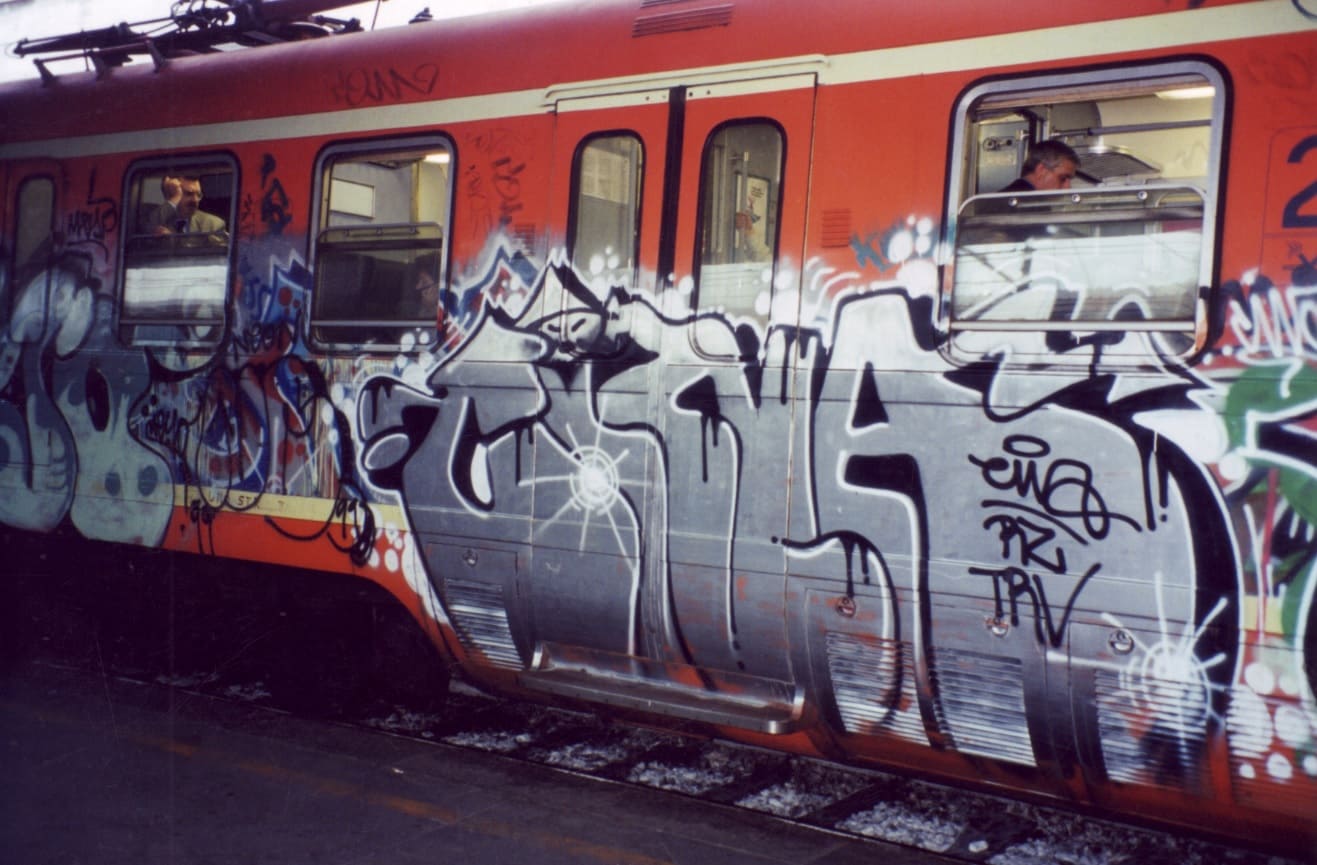
Which were your first steps in the scene?
I took my first steps when I was little more than a kid. Initially, I was writing in my neighborhood with a friend, and he tagged Kyashan (a name inspired by a Japanese cartoon), which later became Wisk. In my first piece, I wrote Crime and I did it together with Kyashan. I remember I did the outlines first and then coloured in (ed laughs). We started street bombing right away, and with time we started getting to know those who were already doing it before us, and they would take us with them.
Of course, at first, we would stand in for them at night while they were doing the A or B subway lines. I remember the first time, where Stand said to me, “Go it’s your time,” it was the A-line, and I remember well that I wrote beside my piece, “14 years old and so much desire to grow.” A lot of what I am telling you can be found in my first book “I live for this.”
The Roman underground has an unmistakable style that has made its way around the world, from bombing to subways and trains, what was the scene like when you started?
Graffiti in Rome in those years we could say that was divided into two separate scenes, one composed of traditional writers i.e. tags, bombing, and trains, where everyone wrote only their name, while the other one was composed of writers from social centers such as the BK38 or 00199 crews, the latter formed only by women. Thus in those years if you were part of the Hip Hop scene you were writing your name, whereas being part of the social centers movement meant writing either a message or phrases that could represent the ideas of the movement. I remember it often happened that during demonstrations done by social centers, at a certain point, the procession would stop and demonstrators would open a circle to protect and hide writers who were writing these phrases on the walls from cops.
This was a situation that was replicated in the rap scene as well, an initial demarcation that has been going on until at least the mid-1990s, which made both sides initially dislike each other. Then we came along, by mean me, Heko (later to become Pane), Ciof T (Joe), Koma, and Hestro (Sugo)-followed by we formed the ETC crew later to become TRV-and we acted as a link. We attended social centers and painted with them, but we also knew the whole other Hip Hop world, acting as a real glue. Eventually, we realized that we were all part of the same world, maybe in different forms, but that anyway shared the same origin.
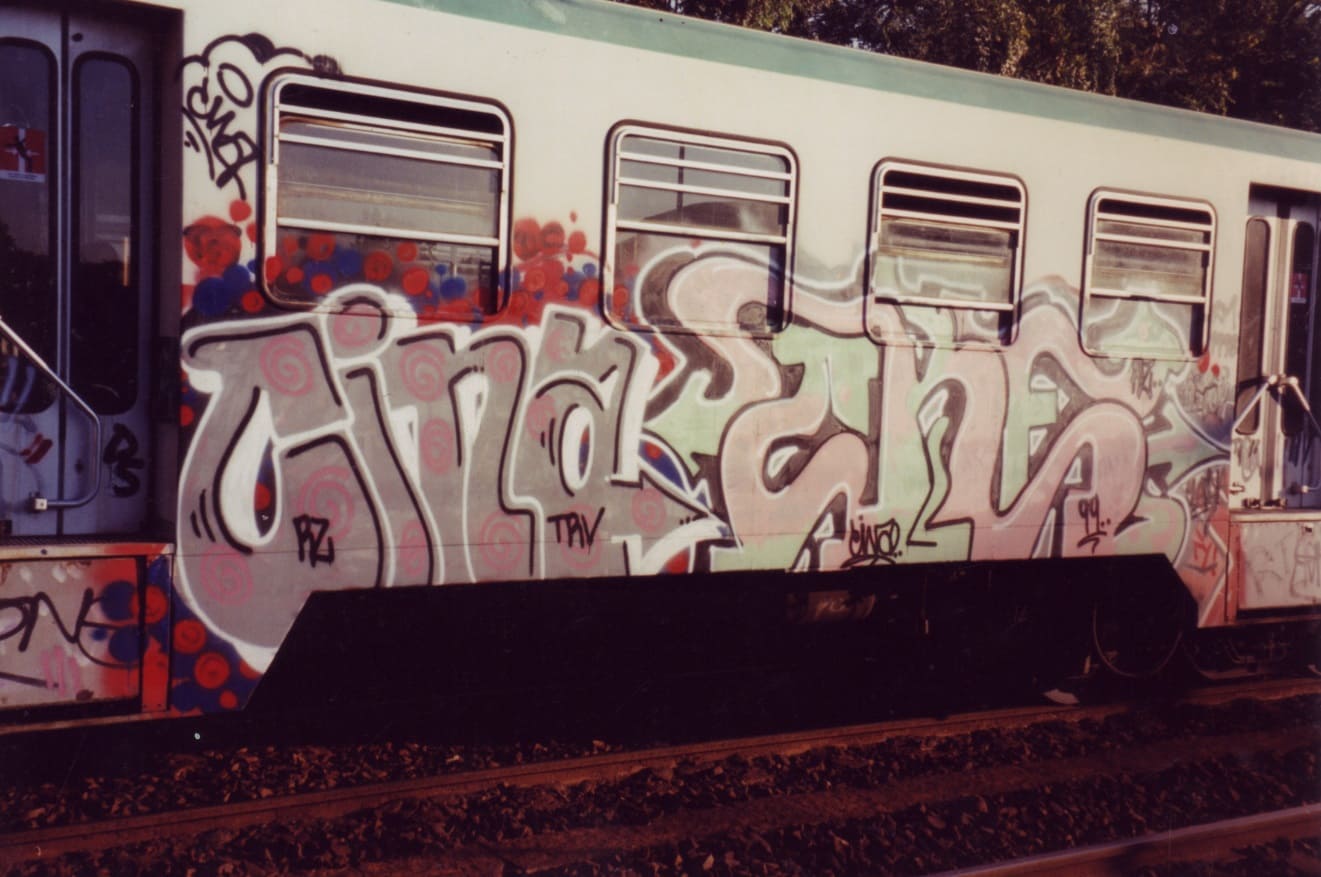
Did the scene that was being formed in Rome have any outer influence? Any reference points?
In Rome, in 1990, there were starting to be a lot of writers, mostly knowing each other, hence when there’s someone coming from abroad bombing or painting trains, we understood whether they were writers from our city or not. Kraze was the link that led Rome into connecting with writers from all over Europe, thanks to him living in Amsterdam, and would often come down to Italy having family in Rome, and his tags around the city were quickly noticeable. One day Stand met him, and from there, our vision changed dramatically. Kraze at the time had been painting in Amsterdam already with kings of the world scene, and when the news that he was painting in Rome and that subways could be painted in Rome spread, writers from other European cities contacted Kraze and Stand. We ended up painting with powerful people like Delta, Fume from Dortmund, Sento TFP, Honet, and many others. Our style, meaning TRV style, is, in fact, a hybrid between European and New York styles, and is due to influences of writers who were coming to Rome in those years, and who we used to take to the subways.
The generation of Roman writers at the time was 15 to 20 years old, and we ended up painting with people 30 to 35 years old who came from France, Germany, the United States, and Holland. I tried to learn as much as I could from them, I knew they had more background than we did, and they had knowledge of things that we maybe didn’t know. For example, we would initially do the pieces under the window, we almost had a kind of reverence for the repressive system, while we would see Fume doing a Top to Bottom, so we would try to steal with our eyes and make our own things that we liked the most. Hanging out with writers who came from Europe or America totally changed our vision, style, and action at night.
According to you, why in Italy the underground movement of graffiti but more generally of Hip Hop arrived at least 10 years late? As you said the scene in Rome was mostly composed of 15-20 years old while in Europe there were already people at least 10/15 years older.
In my opinion, it is due to the fact that Italian generations before ours, who grew up in the late 70s and early 80s, apart from a few examples, did not have so much opportunity to travel, maybe because of money issues but also cultural. Whereas in other European cities, it was maybe more common, for example going from London to New York and vice versa, or from Amsterdam to London and so on. In Italy, this became more common in the 1990s. Then it is also true that London and Berlin were cities with already a strong presence of different ethnic groups, and consequently different inputs, inevitably leading to more open-mindedness, which in Italy definitely came later.
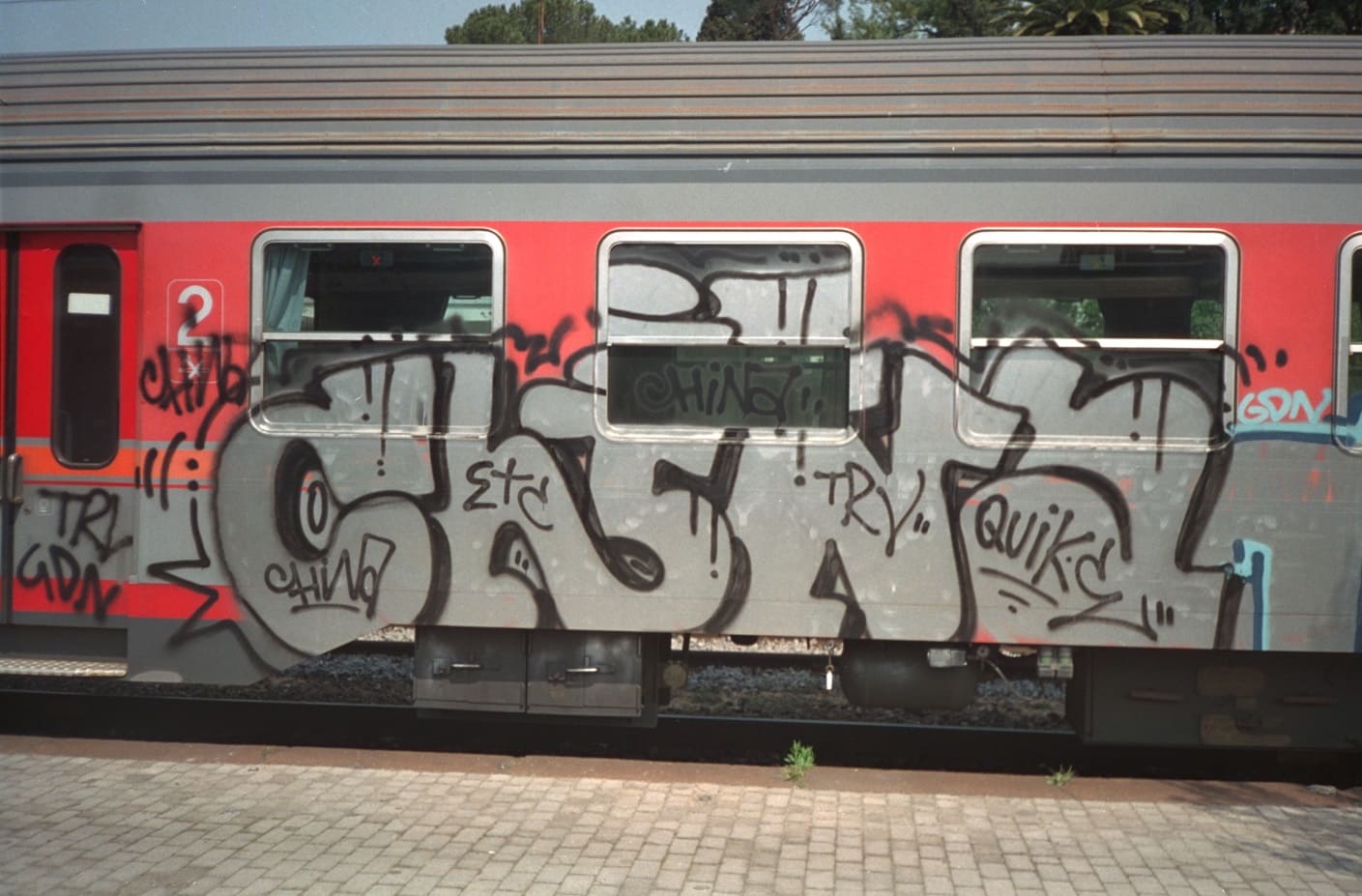
Competition is an integral part of graffiti, and in Rome competitiveness is in every inch. How did you experience it, and do you still experience it now?
The competition between us was something that spurred us on to improve. We were the ETC (me, Pane, Joe, Hestro, Nico, and Koma) until one day together with Stand (MT2) we decided in Piazzale Flaminio to merge the two crews, thus becoming TRV. There was healthy competition between us, while with the rest of the scene, we wanted to be number one, and aimed to be the best in the most hardcore way possible, and I think we succeeded. We had a very arrogant attitude back in the day, I won’t hide from you that we always wanted to prevail, if someone did a song in a good place we had to do it in an even better one.
Over the years in Italy there has been a strong crackdown on writers, with strict laws, what was it like in the nineties and how has it evolved?
One of the reasons why the Roman scene has established itself worldwide is also due to the fact that from the early 1990s until the 2000s there were no laws against acts of “vandalism,” being a new thing for Italy in general, still, no laws against graffiti had been passed. Which in the rest of the world had been done. For example, in New York, Paris or London there were already anti-graffiti laws and actions, which made life difficult for writers. We here could really do as we wanted, maybe stay for hours in the yard or in the depot, there were not many controls. We could come in ten of us, smash everything and leave without too much trouble.
This was also true for those who came from abroad and were used to more repressive situations, they were faced with an almost heavenly environment. This allowed the scene to consolidate and establish itself worldwide, thanks in part to these favorable conditions. Today it is totally different, and much more complicated, with strict laws that punish writers disproportionately, but nevertheless this does not stop the movement.
It often happens that with time you find new ways to express yourself, you have done it in different ways, from graffiti to rap to books. Each medium has a different power and audience, what is it like to express yourself in various languages and registers?
The first art form I came across was precisely graffiti. They allowed me to express myself and made me feel part of something. Then I started with Rap, which I still pursue today, with which I can convey messages and thoughts. Today in schools or universities I try to bring my vision about Rap and Hip Hop culture, I put it down on paper in the book “Rap Education.”
Many writers with time have evolved their style by bringing it to paintings, doing exhibitions, or collaborating with clothing brands, they have my respect. The moment you can turn a passion into a job without distorting yourself is definitely something to respect. It is also important to make it clear that graffiti and street art are two separate things, I don’t want to be hardcore, but I want to make it clear that they are separate things, I have friends who do street art that I respect very much. I don’t want to demonize street art but simply make it clear that they are two worlds apart.
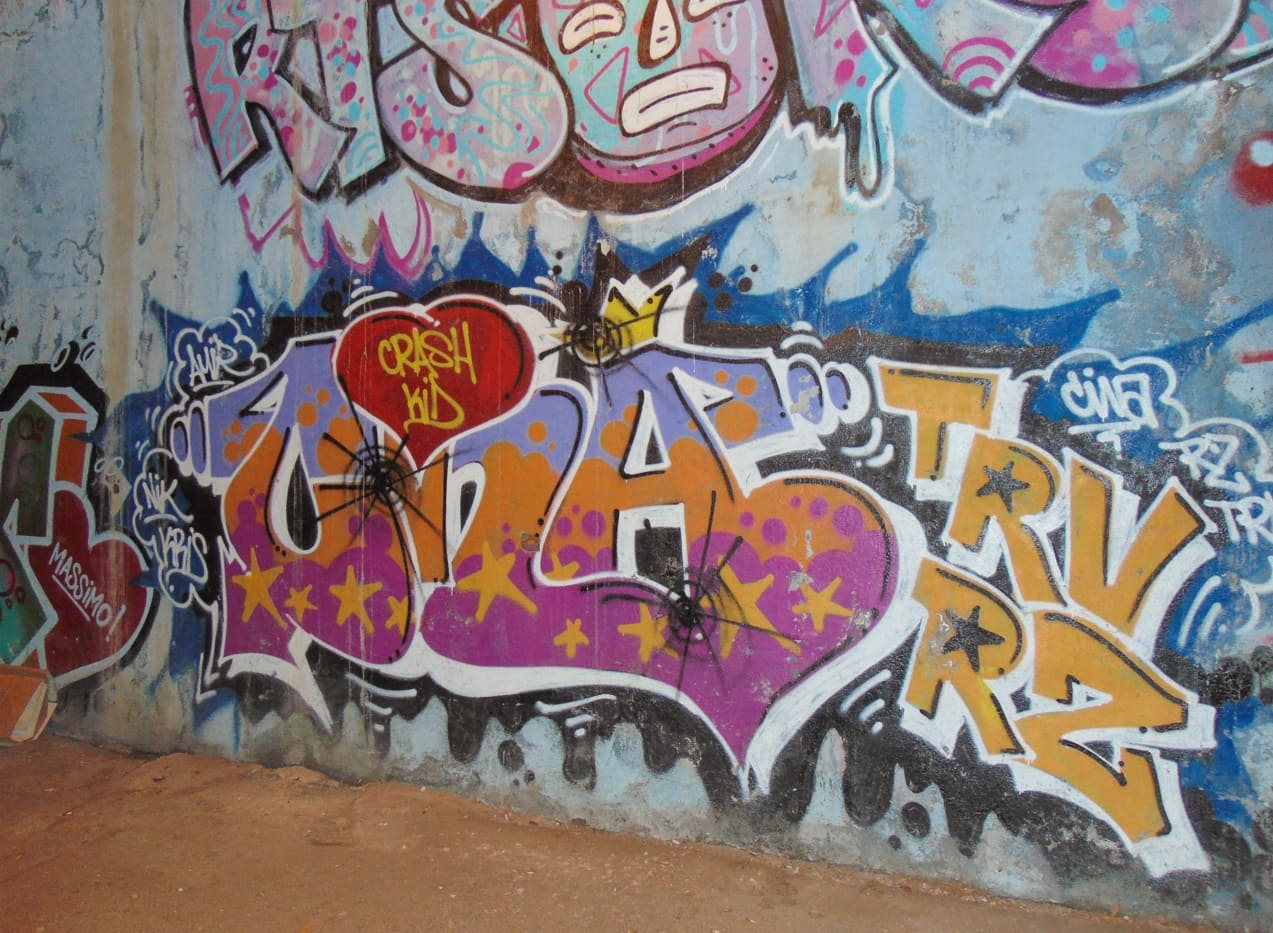
Future and present projects?
I have a project on writing with lots of material and stories that will come out sooner or later. The idea is to make a narrative book with in addition photographic material, where I tell the story of China TRV. In parallel, I have a new album that will be released early next year with a top producer whose name I cannot say yet. I have two edited books “I live for this” and “Rap Education” that I take to schools and universities. I wrote another one titled “Rime Love Poetry” which went to press these days and will be released in bookstores on January 23 (pre-order). Written with Giulia Ananìa in which we analyzed two different languages Rap and Poetry, relating them, trying to make people understand that in the end, they are not such distant worlds. I collaborate with Treccani Cultura for projects to popularize Hip Hop culture in areas where maybe it is not seen as it should be. I try to make it clear that this culture can give people a way to express themselves and also make money from their art.
We’ve come to the end, let’s close by asking you for an anecdote regarding graffiti.
Let me tell you a funny anecdote, we were on the train line in Bologna, and went to one of the many jams we were participating in around Italy. It was me and Heko and others from the crew, painting on the line wall when at some point a yellow control train arrives, we hid, then once it passed I immediately left resuming painting the outline of the piece, however, I realized only afterward being more than halfway through the piece that it was not mine but Heko’s (ed laughs). You can find other anecdotes in my lyrics and books, for instance in the storytelling of the track “Fears” with Masito and Supremo.
